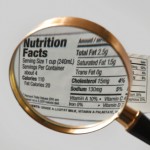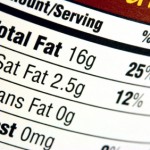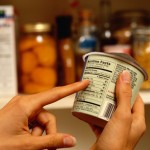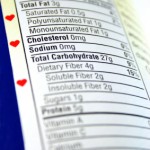 When it comes to food label nutrition facts, front-of-pack is becoming a billboard for not only claims but nutrition facts as well. While there have been several attempts over the past several years to create a standard food label nutrition facts front-of-pack system (FOP), two have emerged recently that merit our attention: 1) Institute of Medicine (IOM) long-awaited report for food label nutrition facts on the FOP; and 2) GMA/FMI Facts Upfront food label nutrition facts for the front-of-pack FOP labeling scheme.
When it comes to food label nutrition facts, front-of-pack is becoming a billboard for not only claims but nutrition facts as well. While there have been several attempts over the past several years to create a standard food label nutrition facts front-of-pack system (FOP), two have emerged recently that merit our attention: 1) Institute of Medicine (IOM) long-awaited report for food label nutrition facts on the FOP; and 2) GMA/FMI Facts Upfront food label nutrition facts for the front-of-pack FOP labeling scheme.
1. IOM’s long-awaited guidance for FOP food label nutrition facts
The Institute of Medicine (IOM) released its long awaited Phase II report in October 2011 that included recommendations for FOP labeling for food label nutrition facts. These food label nutrition facts recommendations were intended to help consumers choose healthier foods to prevent the most common chronic diseases (high blood pressure, heart disease, diabetes and obesity).
The report calls on FDA/USDA to develop, test and implement a single, standard FOP symbol system to appear on all food label nutrition facts on the FOP and be actively promoted to industry, consumers and other stakeholders. This food label nutrition facts symbol system includes “nutrients to limit” (calories, saturated and trans fats, sodium, and added sugars).
Click here to see the IOM’s recommendation for FOP: http://www.factsupfront.com/aboutTheIcons.html
Highlights for FOP food label nutrition facts
• Use of a ranking system (points) on the FOP food label nutrition facts to indicate a product meets qualifying criteria for saturated and trans fats, sodium and added sugars.
• No points on the FOP food label nutrition facts given to product categories that significantly add sugars (sugars, sweets, and beverages) or exceed threshold limits for any of the critical nutrients.
• While the FOP food label nutrition facts recommendations are for retail foods (packages and shelf tags), IOM hopes they will also be implemented for food label nutrition facts for foods sold in restaurants, food service, and other venues.
2. GMA/FMI’s industry direction for FOP food label nutrition facts
Not long before the IOM recommendations were released, Grocery Manufacturers Association (GMA) and the Food Marketing Institute (FMI) announced Facts Up Front, originally introduced as Nutrition Keys, a voluntary FOP food label nutrition facts system. Facts Up Front features information about both “nutrients to limit” (calories, saturated fat, sodium and sugar), as well as “nutrients to encourage” (potassium, fiber, protein, vitamin A, vitamin C, vitamin D, calcium and iron.) This is contrasted with IOM’s recommendations for FOP food label nutrition facts system that does not include “nutrients to encourage”.
Click here to see GMA/FMIs Facts Up Front: http://www.factsupfront.com/aboutTheIcons.html
How will FDA/USDA use these FOP food labels nutrition facts systems?
Neither of these systems add any new requirements for those who manage FOP food label nutrition facts. Industry is voluntarily adopting the GMA/FMI system and graphic as it has begun appearing on more and more package labels. Until FDA/USDA issues FOP food label nutrition facts regulations based on the IOM report or other recommendations, the GMA/FMI voluntary system seems likely to prevail. Any new regulations or guidance that FDA or USDA would issue could take several years to publish and/or become law.
Front-of-pack: a billboard for benefits
Still unclear about front-of-pack guidance for food label nutrition facts? Have an opinion to share? Join the discussion in the Food Label Community www.foodlabels.com/linkedin/community on LinkedIn.
About the author
 Karen C. Duester, President of Food Consulting Company
Karen C. Duester, President of Food Consulting Company
Karen Duester founded Food Consulting Company in 1993 to deliver nutrition analysis, and food nutrition facts labels, and food labels regulatory support to ensure 100% compliance with FDA regulations. With over 1,500 clients worldwide, Food Consulting Company functions as the virtual food label department for start-up and established food manufacturers, distributors, food importers, brokers, and restaurateurs. The company’s promise is to deliver accurate, timely service providing everything that’s needed to go from recipe to retail – all with the confidence that it’s done right. Company information and a free email newsletter are available at http://www.foodlabels.com.



